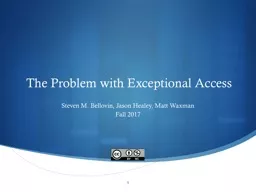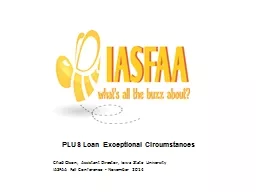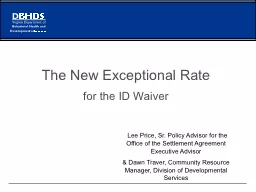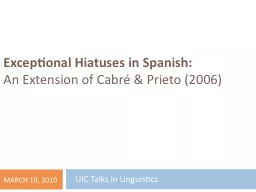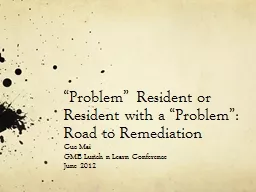PPT-The Problem with Exceptional Access
Author : phoebe-click | Published Date : 2018-12-19
Steven M Bellovin Jason Healey Matt Waxman Fall 2017 1 The Problem True fact modern algorithms if correctly implemented and correctly used are unbreakable Why do
Presentation Embed Code
Download Presentation
Download Presentation The PPT/PDF document "The Problem with Exceptional Access" is the property of its rightful owner. Permission is granted to download and print the materials on this website for personal, non-commercial use only, and to display it on your personal computer provided you do not modify the materials and that you retain all copyright notices contained in the materials. By downloading content from our website, you accept the terms of this agreement.
The Problem with Exceptional Access: Transcript
Download Rules Of Document
"The Problem with Exceptional Access"The content belongs to its owner. You may download and print it for personal use, without modification, and keep all copyright notices. By downloading, you agree to these terms.
Related Documents

